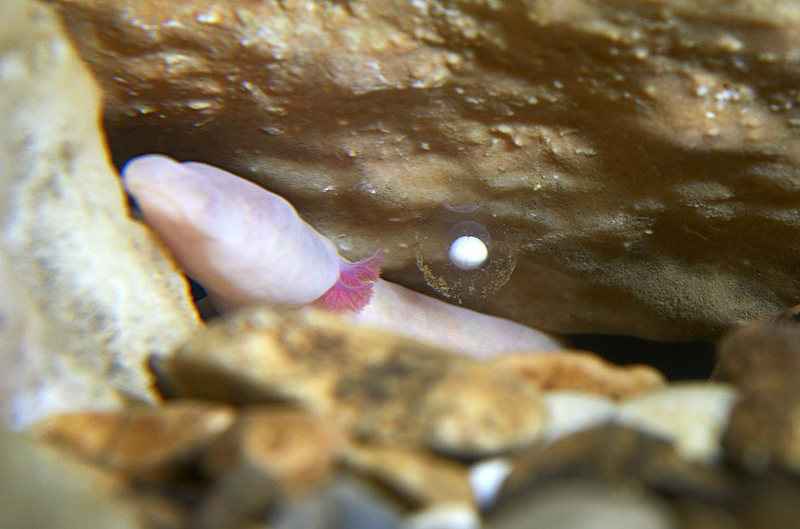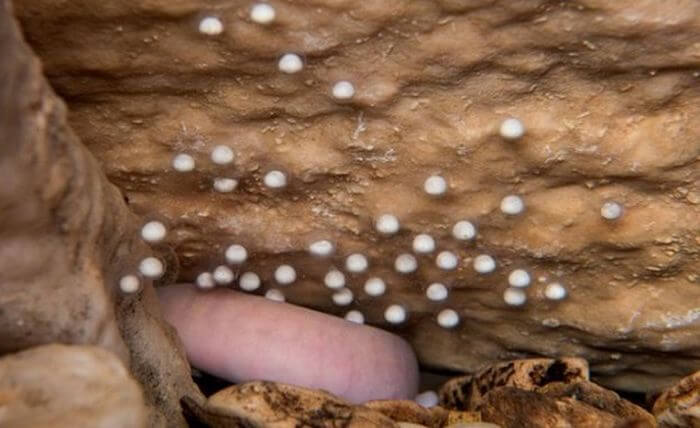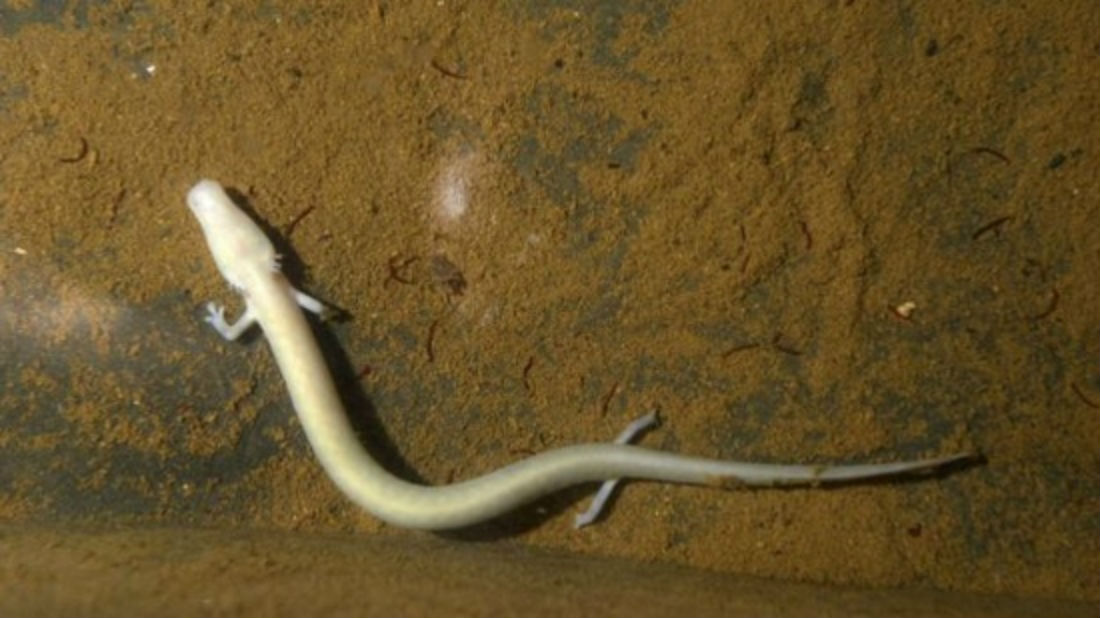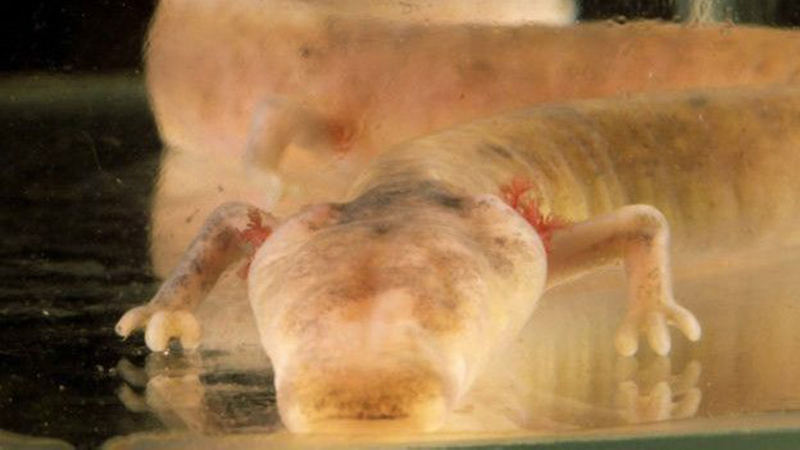Eggs 'young dragons' in the cave hatch after a decade of waiting
Millions of tourists burst into emotion when they saw two larvae hatching from 500 eggs of a mother's goose, exotic and rare amphibians nicknamed "young dragon".

On May 31, observers from all over the world had the opportunity to witness the extremely rare hatching process of goosebumps and amphibians that could live for up to 100 years and only give birth once in each decade. century.Transparent semi-transparent larvae come from thin eggshell after 4 months of being cherished by mother.(Photo: Iztok Medja).

Births are recorded directly like a miracle, according to the cave management agency's description. "Only two young goose hatched successfully from 500 eggs in the wild," the spokesman said.An eel-like animal has lived in the famous Postojna cave, 50 km southwest of Slovenia's capital Ljubljana, for millions of years (Photo: Iztok Medja).

Postojna Cave is one of the first environments that allows for successful breeding of strong vigorous species under human supervision. "Although both science and previous research experience have shown that it is unlikely that the scene in the interior aquarium will end well, we still believe it will happen," the spokesman said.(Photo: Iztok Medja).

Two newly born larvae will soon have more siblings, as many other eggs can hatch at any time.Inside the large room, the mother and her cubs are kept in complete darkness in the tank in front of the continuous monitoring of the night vision camera. (Photo: Iztok Medja).

Through the nearby television screen, visitors can watch small eggs floating on the rock. Occasionally, one of the eggs shook slightly. "It was a moment that made you happy because you existed and witnessed such a rare event, " Discovery News quoted Saso Weldt, Postojna cave biologist, among the caves. Europe's largest and attracting 700,000 visitors each year.(Photo: Iztok Medja).

Weldt and his team hope that the newly born strong herd will help them learn more about the animal that is considered the national symbol of Slovenia. Although very excited when referring to "young dragon" , local people appear to be afraid to approach the cave for centuries.According to tradition, in winter, heavy rains often swept away from the cave.(Photo: Iztok Medja).

With a maximum length of 35cm, blind goose species has 4 small limbs. Sometimes called "fish" , there are three pieces of pink in each side of the muzzle.The pink skin is transparent, making the internal organs visible.(Photo: Youtube).

Due to living in caves, manholes develop some very effective hunting skills.Instead of vision, receptor owners feel extremely sensitive in the sense of smell and movement, helping it hunt prey like crabs and snails in the dark.In addition, thunderstorms can survive without food for a decade.(Photo: Iztok Medja).
- The tiger bird - The silver mother and the killer child
- Video: 7 Komodo dragons rarely born in Indonesia
- Strange fasting fish to hatch eggs in the mouth
- What few people know about the number of chicken eggs we still eat every day
- Hatching birds with electronic eggs
- Blind dragon with rare egg cultivation in Slovenian caves
- Records of dragons 'real' in history
- Tourists escape from Komodo dragons thanks to their quick wits
- The deepest cave in England is beautiful and sparkling
- Should eggs be eaten every day?
- Trapped in a cave, how long can humans live?
- Discovering 'young dragon' in a lake deeper than 100m underground
 Animal 'suffering' after hibernation
Animal 'suffering' after hibernation Why do goats climb well?
Why do goats climb well? Scientists were surprised to see chimpanzees eating turtles
Scientists were surprised to see chimpanzees eating turtles Giant catfish died deadly due to drought in Thailand
Giant catfish died deadly due to drought in Thailand Photos capture Shanghai's golden age, every frame is as beautiful as a movie
Photos capture Shanghai's golden age, every frame is as beautiful as a movie  Revealing a series of rare photos recording little-known things in history
Revealing a series of rare photos recording little-known things in history  Top 9 Gods in 'Greek Mythology'
Top 9 Gods in 'Greek Mythology'  Photographs of Chinese Women 150 Years Ago
Photographs of Chinese Women 150 Years Ago  Leaked photos of Leonardo da Vinci and Mona Lisa, experts join in to find surprising clues
Leaked photos of Leonardo da Vinci and Mona Lisa, experts join in to find surprising clues  Birds that don't look at each other win prestigious European nature photo award
Birds that don't look at each other win prestigious European nature photo award 